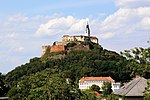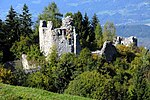.mw-parser-output .hidden-begin{box-sizing:border-box;width:100%;padding:5px;border:none;font-size:95%}.mw-parser-output .hidden-title{font-weight:bold;line-height:1.6;text-align:left}.mw-parser-output .hidden-content{text-align:left}You can help expand this article with text translated from the corresponding article in German. (July 2009) Click [show] for important translation instructions.
View a machine-translated version of the German article.
Machine translation, like DeepL or Google Translate, is a useful starting point for translations, but translators must revise errors as necessary and confirm that the translation is accurate, rather than simply copy-pasting machine-translated text into the English Wikipedia.
Do not translate text that appears unreliable or low-quality. If possible, verify the text with references provided in the foreign-language article.
You must provide copyright attribution in the edit summary accompanying your translation by providing an interlanguage link to the source of your translation. A model attribution edit summary is Content in this edit is translated from the existing German Wikipedia article at [[:de:Burgruine Rauhenstein]]; see its history for attribution.
You should also add the template ((Translated|de|Burgruine Rauhenstein)) to the talk page.
For more guidance, see Wikipedia:Translation.
| Burgruine Rauhenstein | |
|---|---|
| Lower Austria, Austria | |
 Southwest view of the Rauhenstein castle ruins | |
| Type | Castle |
| Site history | |
| Built | 12th century |
Burgruine Rauhenstein is a castle in Baden bei Wien, Lower Austria, Austria. It was constructed in the 12th century. It is known to be the location where Karl van Beethoven, Ludwig van Beethoven's nephew, attempted suicide in July 1826.






